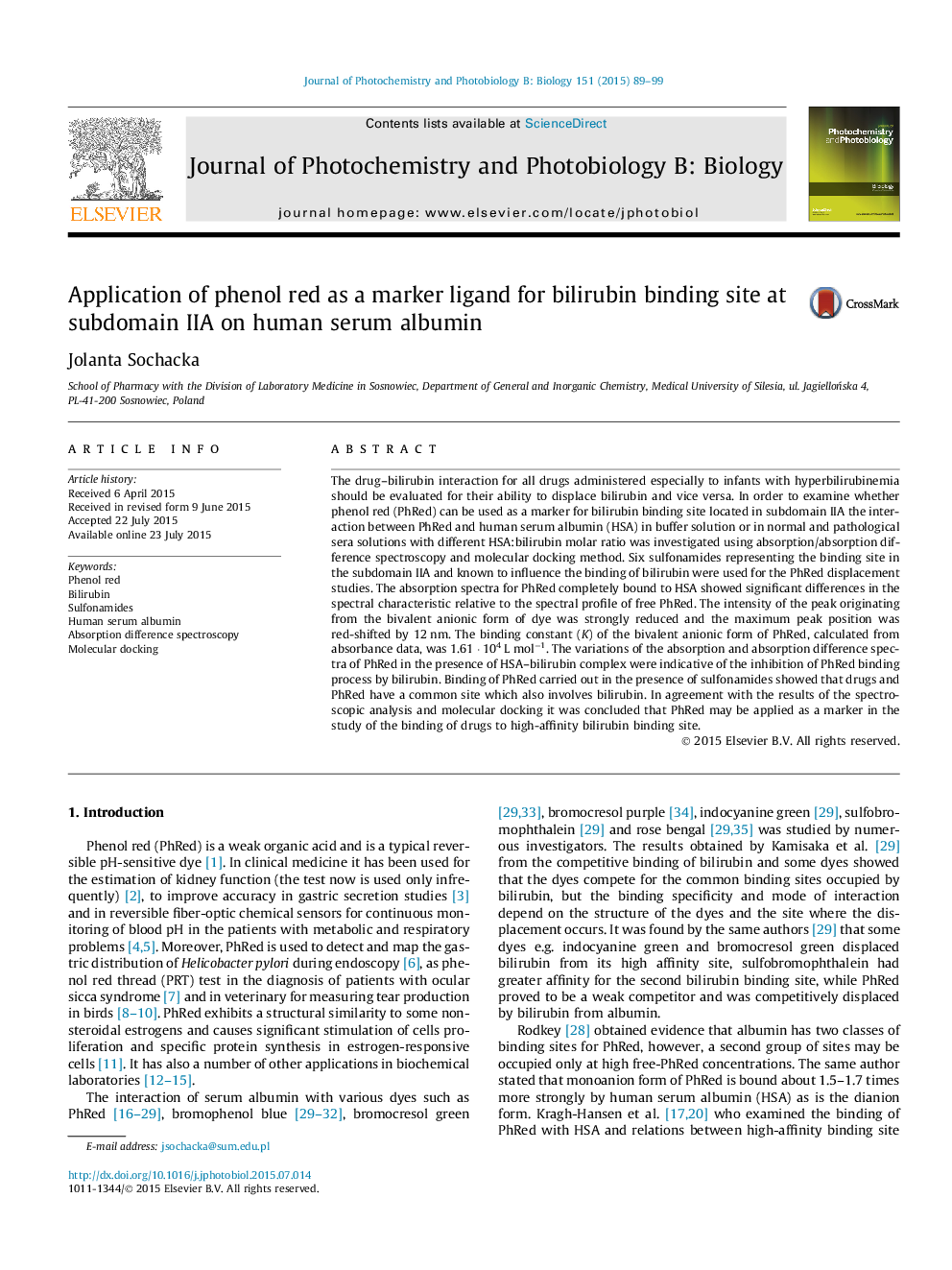| Article ID | Journal | Published Year | Pages | File Type |
|---|---|---|---|---|
| 30221 | Journal of Photochemistry and Photobiology B: Biology | 2015 | 11 Pages |
•Phenol red binds in bilirubin binding site in subdomain IIA on HSA molecule.•The binding of phenol red to HSA depends on the bilirubin serum levels.•PhRed could be applied as qualitative probe for testing the binding of drugs to primary binding site of bilirubin.
The drug–bilirubin interaction for all drugs administered especially to infants with hyperbilirubinemia should be evaluated for their ability to displace bilirubin and vice versa. In order to examine whether phenol red (PhRed) can be used as a marker for bilirubin binding site located in subdomain IIA the interaction between PhRed and human serum albumin (HSA) in buffer solution or in normal and pathological sera solutions with different HSA:bilirubin molar ratio was investigated using absorption/absorption difference spectroscopy and molecular docking method. Six sulfonamides representing the binding site in the subdomain IIA and known to influence the binding of bilirubin were used for the PhRed displacement studies. The absorption spectra for PhRed completely bound to HSA showed significant differences in the spectral characteristic relative to the spectral profile of free PhRed. The intensity of the peak originating from the bivalent anionic form of dye was strongly reduced and the maximum peak position was red-shifted by 12 nm. The binding constant (K) of the bivalent anionic form of PhRed, calculated from absorbance data, was 1.61 · 104 L mol−1. The variations of the absorption and absorption difference spectra of PhRed in the presence of HSA–bilirubin complex were indicative of the inhibition of PhRed binding process by bilirubin. Binding of PhRed carried out in the presence of sulfonamides showed that drugs and PhRed have a common site which also involves bilirubin. In agreement with the results of the spectroscopic analysis and molecular docking it was concluded that PhRed may be applied as a marker in the study of the binding of drugs to high-affinity bilirubin binding site.
Graphical abstractFigure optionsDownload full-size imageDownload as PowerPoint slide
